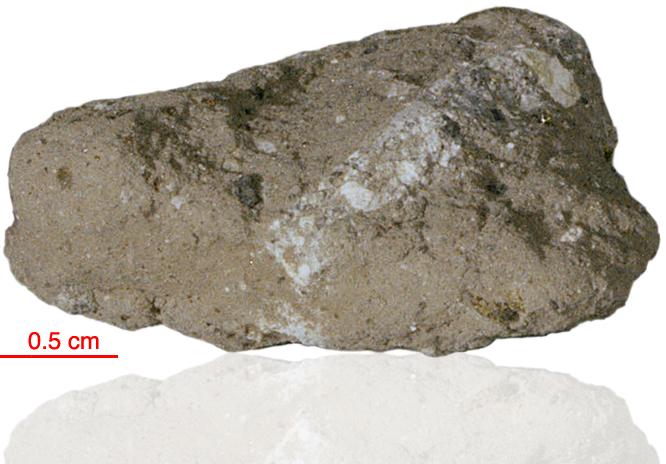
Fact sheet
15268 is a coherent regolith breccia with a typical complement of regolith breccia components. It is medium grey, slabby, subrounded, and fairly homogeneous. It contains abundant glass as spheres and shards, although red/orange and yellow glasses appear to be very rare. Several small lithic clasts appear to be mare basalts. Few of the constituents are heavily shocked. Several clast types have been described including anorthosites, metabasalts and breccias. It also contains green and orange/brown (see rotation 1) glass. Damage to this thin section during micro-analysis is particularly apparent in reflected light.
The sample weighed 11 grams before analysis and has not been dated.
Further details of this and other Apollo samples are here: http://curator.jsc.nasa.gov/lunar/
The Apollo 15 landing site was in the Apennine Highlands, and close to Hadley Rille — a long, narrow winding valley. Approximately 76 kg of lunar material, including soil, rock, core-tube and deep-core samples, were returned to Earth.
This mission was the first flight of the Lunar Roving Vehicle which allowed the astronauts to venture further from the Lunar Module than in previous missions. During three periods of extravehicular activity, or EVA, on July 31st, and August 1st and 2nd, Scott and Irwin completed a record 18 hours, 37 minutes of exploration, travelling 17.5 miles, in the first car that humans had ever driven on the Moon.
Apollo 15 was launched on 26 July 1971.






